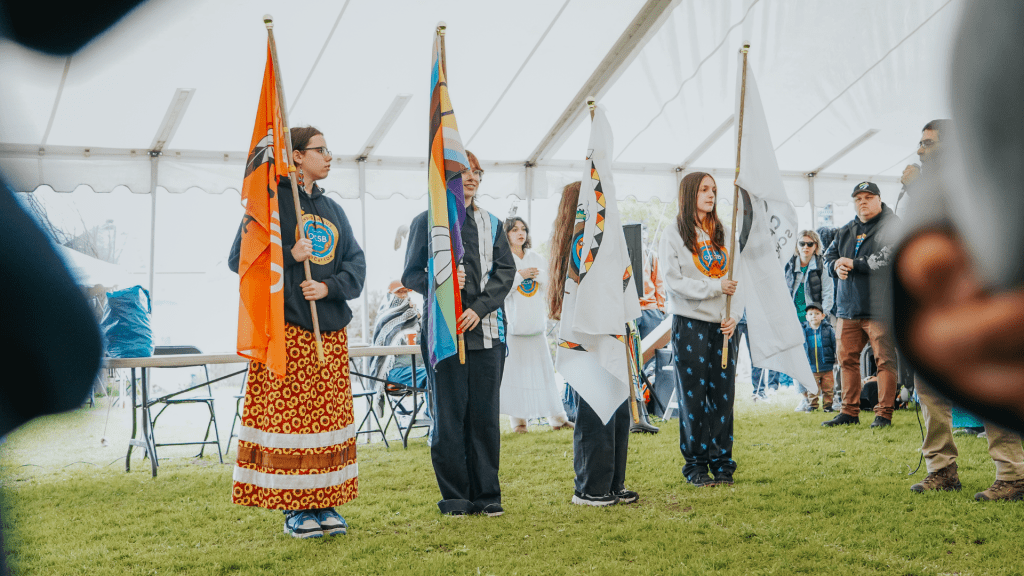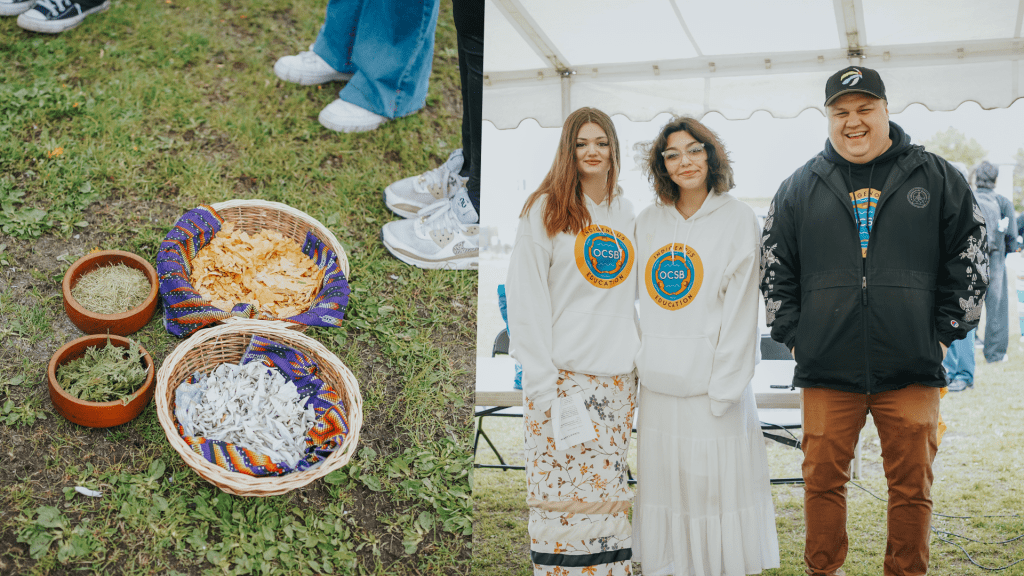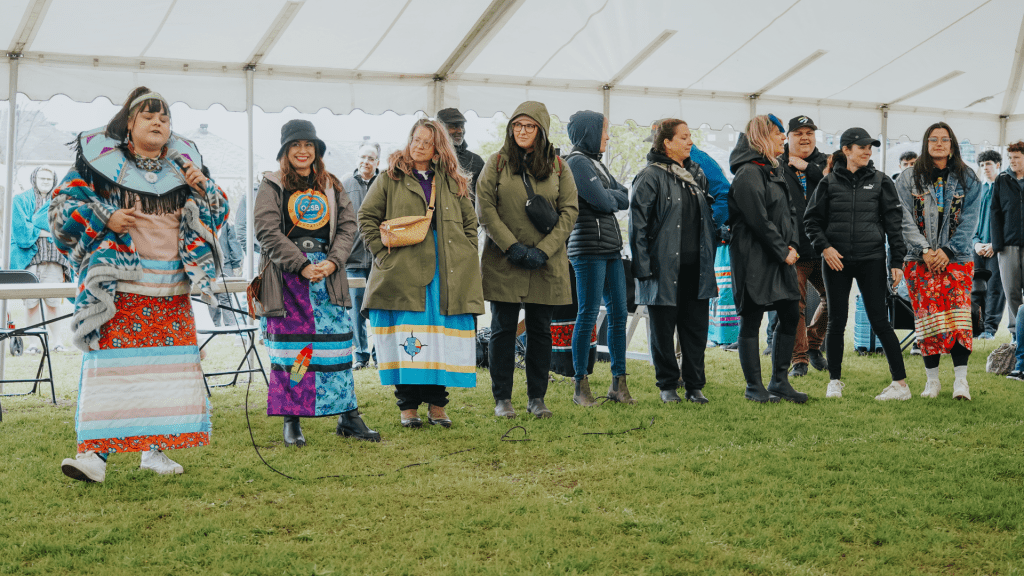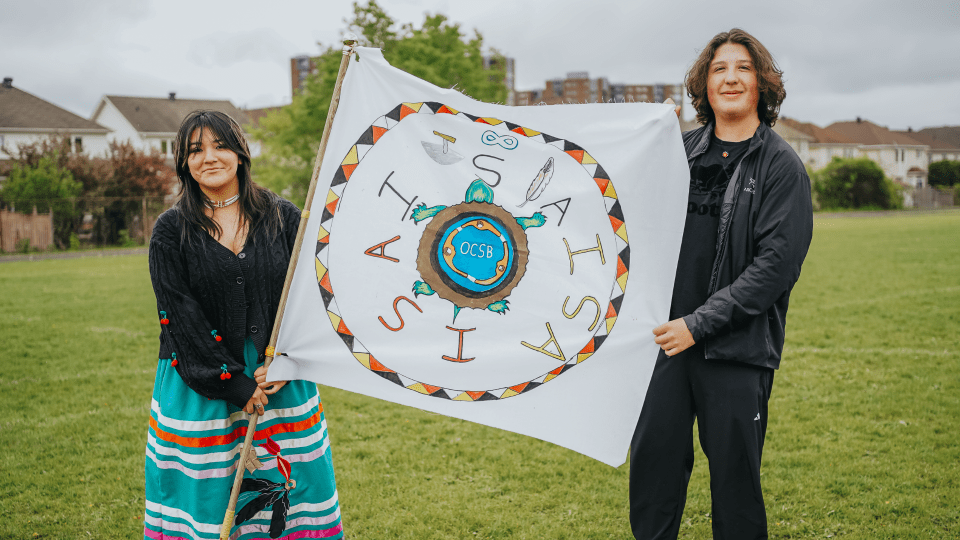
St. Patrick’s High School came alive with colour, music, and spirit as it proudly hosted a vibrant, all-day Indigenous Student Cultural Gathering and Pow Wow – a powerful event for the OCSB community. Students, elders, educators, and community leaders from across the city united for a celebration rooted in culture, tradition, and connection. From the moment the first drumbeat sounded, the day became a living tribute to Indigenous voices, identity, and youth leadership.
This gathering was the result of years of thoughtful planning and collaboration. When the OCSB Indigenous Education Team invited St. Patrick’s to provide the space for the first annual Indigenous cultural celebration, the school embraced the opportunity with pride and enthusiasm. From that point forward, a network of students, staff, and community partners worked together to bring the vision to life.
Grounded in Student Leadership
Each OCSB high school’s Indigenous Student Association (ISA) selected student representatives to help plan the event. These students were empowered to shape the gathering from the start, regularly meeting with the Indigenous Education Team to provide input and take on key responsibilities. Their leadership was essential in ensuring the day was inclusive, respectful, and rooted in Indigenous perspectives. At St. Patrick’s, staff collaborated closely with the Indigenous Education Team to coordinate logistics. Team leads were praised for their dedication, professionalism, and cultural knowledge. Set-up began the evening before, and the school grounds were transformed into a welcoming space of celebration and reflection by morning.

Rooted in Tradition
The day was brought to life through a partnership with Indigenous Experiences, which brought in singers, dancers, drummers, and traditional performers. A Sacred Fire, permitted through special arrangements, remained lit throughout the day—as is tradition at many Indigenous cultural gatherings—and it was deeply appreciated that this could be respected at the St. Patrick’s High School site.
By mid-morning, buses began arriving with students from high schools across the city. Many participants wore regalia, proudly showcasing their traditional clothing, colours, and identities. Community vendors set up booths, while guests from across Ottawa joined to show support and participate in the celebration.
Staff in attendance included OCSB Director of Education Dr. Tom D’Amico and Superintendent Dr. Prince Ehoro, who attended the Opening Ceremony—a moving and memorable start to the day. Throughout the event, visits from Superintendents Mary Donaghy and Tim Slack reflected the Board’s strong support for Indigenous education and community engagement.
The gathering featured a wide range of performances and cultural teachings. Drummers and singers shared powerful music that echoed across the field, while dancers invited students to join in and experience traditional teachings first-hand. Students led various elements of the day, often working side-by-side with elders, creating meaningful moments of respectful and traditional learning.
Each performance and activity offered a chance to reflect, learn, and grow. For many, it was the first time experiencing such traditions in person—an unforgettable and emotional opportunity to honour Indigenous culture and history in an educational setting.
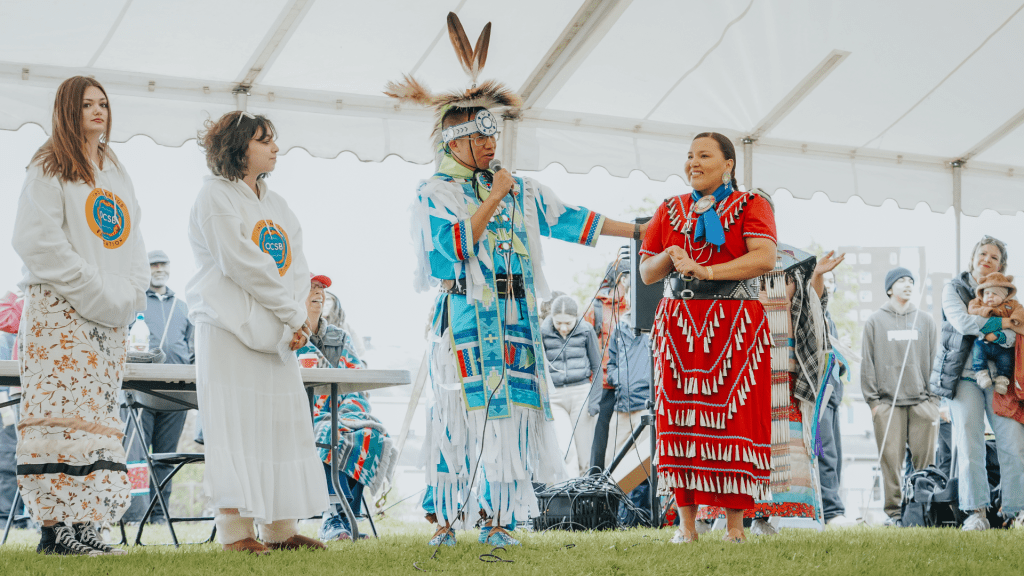
A Timely Celebration
The event came at an especially meaningful time: June is National Indigenous History Month—a month dedicated to learning about the unique cultures, traditions, and experiences of First Nations, Inuit, and Métis Peoples. It’s a time to honour their stories, achievements, and resilience, and to recognize the deep and lasting presence of Indigenous Peoples on this land. Feedback from students, staff, and community members was overwhelmingly positive. Many expressed how deeply they were impacted by the performances, teachings, and sense of unity that filled the day. The event served as both a celebration and a call to continue walking together on a journey of attempting to understand the truth, so that we can approach the path towards reconciliation.
